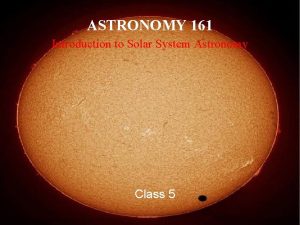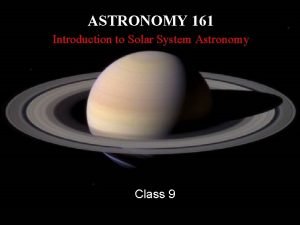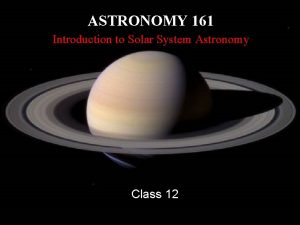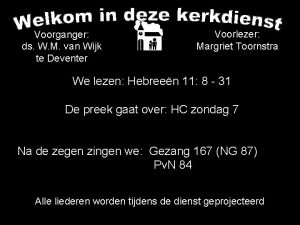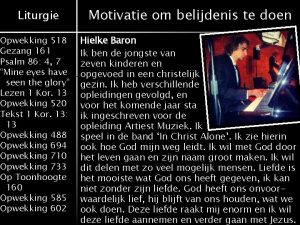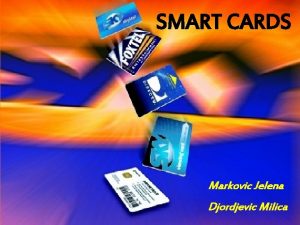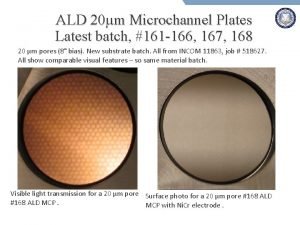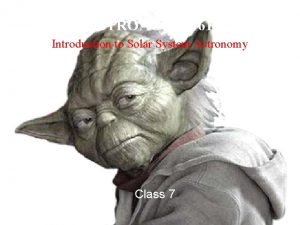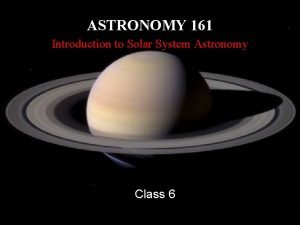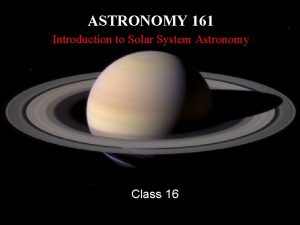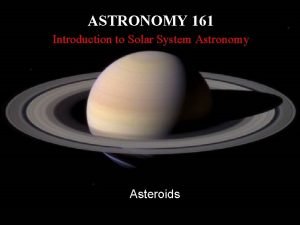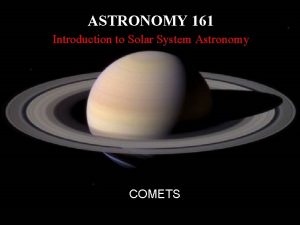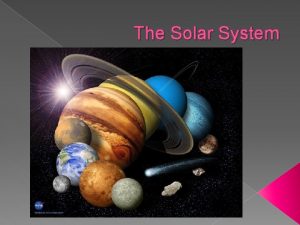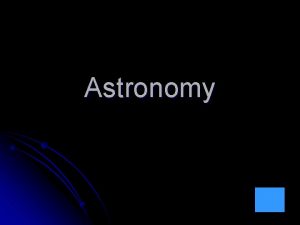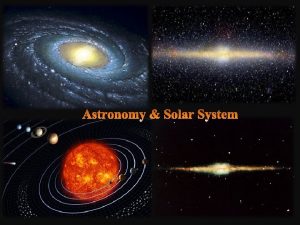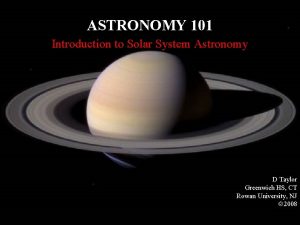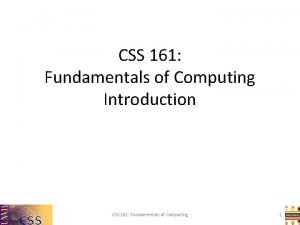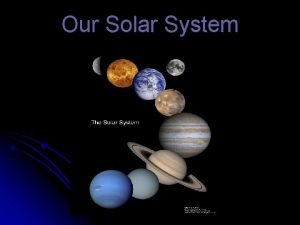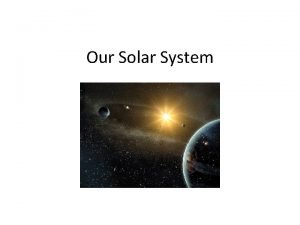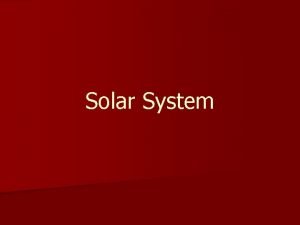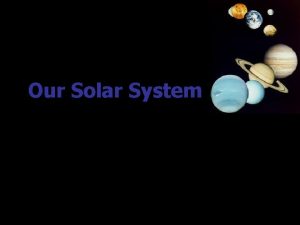ASTRONOMY 161 Introduction to Solar System Astronomy Class






















- Slides: 22

ASTRONOMY 161 Introduction to Solar System Astronomy Class 10

Spectra Wednesday, January 31 “Twinkle, twinkle, little star, How I wonder what you are. ”

Spectra: Key Concepts (1) A hot, transparent gas produces an emission spectrum. (2) A cool, transparent gas produces an absorption spectrum. (3) Every type of atom, ion, and molecule has a unique spectrum. (4) The most abundant elements in the universe are hydrogen and helium. (5) The radial velocity of an object is found from its Doppler shift.

(1) A hot, transparent gas produces an emission spectrum. Consider a single, isolated atom: A nucleus, containing protons and neutrons, is surrounded by a cloud of orbiting electrons. Electrons can emit or absorb photons.

Consider hydrogen (the simplest atom): one proton, one electron. Behaviour on subatomic scales is governed by quantum mechanics. One rule of quantum mechanics: electrons can only exist in orbits of particular energy (energy is quantizied).

When an electron falls from a high energy orbit to a low energy orbit, the energy lost is carried away by a photon. In hydrogen, an electron falling from orbit 3 to orbit 2 emits a photon with l = 656. 3 nanometers.

Consider a hot, low density cloud of hydrogen. Light is emitted only at wavelengths corresponding to energy differences between permitted electron orbits. Results: an emission line spectrum.

The Carina Nebula A cloud of hot, low density gas about 7000 light years away. Its reddish color comes from the 656. 3 nm emission line of hydrogen.

(2) A cool, transparent gas produces an absorption spectrum. Consider a cold, low density cloud of hydrogen in front of a hot blackbody. Light is absorbed only at wavelengths corresponding to energy differences between permitted electron orbits. Result: an absorption line spectrum.

(3) Every type of atom, ion, and molecule has a unique spectrum. Ion: an atom with electrons added (negative ion) or taken away (positive ion). Molecule: two or more atoms bonded together. The spectrum of each atom, ion, and molecule is a distinctive “fingerprint”.

The more complicated the atom, ion or the molecule, the more complex the spectrum.

From emission or absorption lines, we know: 1) which elements are present; 2) whether they are ionized; 3) whether they are in molecules. emission spectrum of the Carina Nebula

(4) The most abundant elements in the Universe are hydrogen and helium. It is fairly easy to determine which elements are present in a star. It is much harder to determine how much of each element is present. Strength of emission and absorption lines depends on temperature as well as on the element’s abundance.

Abundance of elements in the Sun’s atmosphere: Hydrogen (H): 75% Helium (He): 23% Everything else: 2% As discovered in 1920’s, other stars are mostly hydrogen and helium, too.


Cecilia Payne-Gaposchkin (1900 -1979) was a British. American astronomer. She left England in 1922. In 1925, she became the first ever Ph. D. in astronomy from Harvard. Her thesis established that hydrogen was the overwhelming constituent of the stars.

(5) The radial velocity of an object is found from its Doppler shift. Radial velocity = how fast an object is moving toward you or away from you. If a wave source moves toward you or away from you, the wavelength is changed.

The reason for Doppler shifts: Wave crests are bunched up ahead of the light source, stretched out behind.

If a light source is moving toward you, the wavelength is shorter (called a “blueshift”). If a light source is moving away from you, the wavelength is longer (called a “redshift”).

Size of Doppler shift is proportional to radial velocity.

Example:

Spectra: Few closing questions: 1) What kind of spectrum will be produced by very hot, but also very dense hydrogen gas? 2) If you have hot gas in front of a star, what kind of spectrum will you see? 3) Which spectrum is more complex: that of hydrogen or that of helium? 4) What is the maximum blueshift possible? 5) What is the maximum redshift possible? (tricky)
 Astronomy 161
Astronomy 161 Solar system astronomy class
Solar system astronomy class Solar system astronomy class
Solar system astronomy class Astronomy 161
Astronomy 161 Learning astronomy by doing astronomy
Learning astronomy by doing astronomy Learning astronomy by doing astronomy activity 7 answers
Learning astronomy by doing astronomy activity 7 answers Learning astronomy by doing astronomy
Learning astronomy by doing astronomy Wholesalesolar.com
Wholesalesolar.com Inexhaustible source of energy
Inexhaustible source of energy Gezang 161
Gezang 161 Gezang 161
Gezang 161 Vidas blue
Vidas blue Snmp ports
Snmp ports Opwekking 694
Opwekking 694 Convenio 161 oit resumen
Convenio 161 oit resumen Cs161 ucr
Cs161 ucr Computer security 161 cryptocurrency lecture
Computer security 161 cryptocurrency lecture Jelena đorđevic 161
Jelena đorđevic 161 Inls 161
Inls 161 Computer science 161
Computer science 161 Mcp161
Mcp161 Fas 161 disclosure
Fas 161 disclosure Pa 161 program
Pa 161 program
